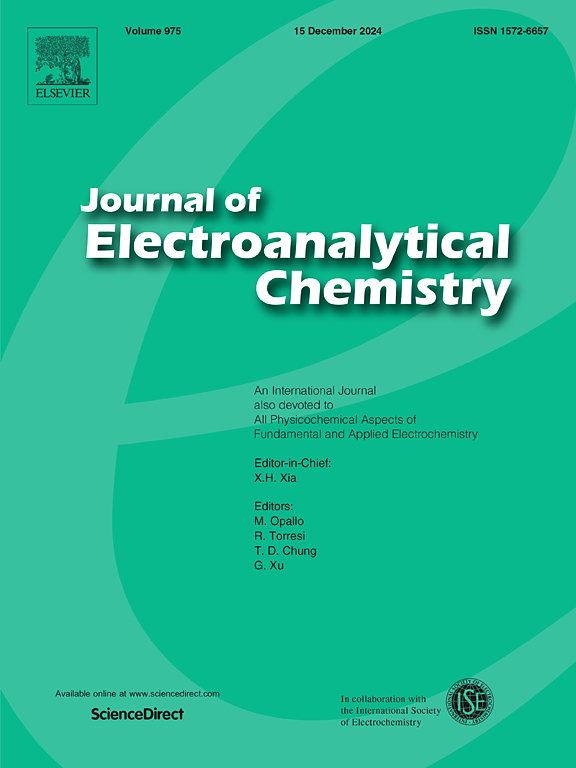Electrocatalytic reduction of N2 for ammonia synthesis by single-atom catalysts based on two-dimensional azulenocyanine monolayers
IF 4.1
3区 化学
Q1 CHEMISTRY, ANALYTICAL
引用次数: 0
Abstract
In this paper, we systematically investigate the potential of a series of transition metal atoms embedded in two-dimensional azulenocyanine monolayer to form TM@Az as single-atom catalysts for electrocatalytic N2 reduction to NH3 (NRR) through first-principles calculations. Thermodynamic and electrochemical stabilities of these materials are studied to evaluate their stability, and the high-throughput screening method is used to screen out the potential candidate of Mo@Az. The detailed reaction mechanism of Mo@Az indicates that the first protonation step is the potential-determining step (PDS) with the limiting potential of −0.53 V. Then, the charge density differences, spin density, charge changes, electronic properties, and selectivity are explored. Notably, the Mo@Az demonstrates the high selectivity toward electrocatalytic nitrogen reduction reaction. We hope that this study can open a door for the development of azulenocyanine materials in the field of catalysis. Additionally, it is anticipated that our research will offer valuable insights and references for designing and developing single-atom catalysts toward electrochemical reduction of N2 to NH3.
基于二维azulenocyanine单层的单原子催化剂电催化还原N2合成氨
在本文中,我们系统地研究了一系列过渡金属原子嵌入二维azulenocyanine单层形成TM@Az作为电催化N2还原为NH3 (NRR)的单原子催化剂的潜力。研究了这些材料的热力学和电化学稳定性,评价了它们的稳定性,并采用高通量筛选方法筛选出了Mo@Az的潜在候选物。Mo@Az的详细反应机理表明,第一步质子化反应为决定电位步骤(PDS),极限电位为- 0.53 V。然后,探讨了电荷密度差、自旋密度、电荷变化、电子性质和选择性。值得注意的是,Mo@Az对电催化氮还原反应具有较高的选择性。希望本研究能为azulenocyanine材料在催化领域的发展打开一扇大门。此外,我们的研究将为设计和开发电化学还原N2到NH3的单原子催化剂提供有价值的见解和参考。
本文章由计算机程序翻译,如有差异,请以英文原文为准。
求助全文
约1分钟内获得全文
求助全文
来源期刊
CiteScore
7.80
自引率
6.70%
发文量
912
审稿时长
2.4 months
期刊介绍:
The Journal of Electroanalytical Chemistry is the foremost international journal devoted to the interdisciplinary subject of electrochemistry in all its aspects, theoretical as well as applied.
Electrochemistry is a wide ranging area that is in a state of continuous evolution. Rather than compiling a long list of topics covered by the Journal, the editors would like to draw particular attention to the key issues of novelty, topicality and quality. Papers should present new and interesting electrochemical science in a way that is accessible to the reader. The presentation and discussion should be at a level that is consistent with the international status of the Journal. Reports describing the application of well-established techniques to problems that are essentially technical will not be accepted. Similarly, papers that report observations but fail to provide adequate interpretation will be rejected by the Editors. Papers dealing with technical electrochemistry should be submitted to other specialist journals unless the authors can show that their work provides substantially new insights into electrochemical processes.

 求助内容:
求助内容: 应助结果提醒方式:
应助结果提醒方式:


